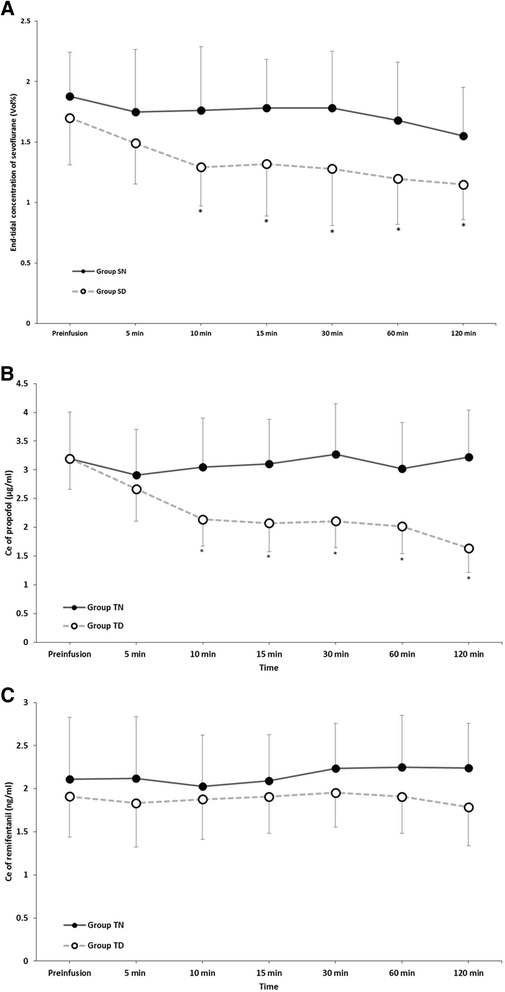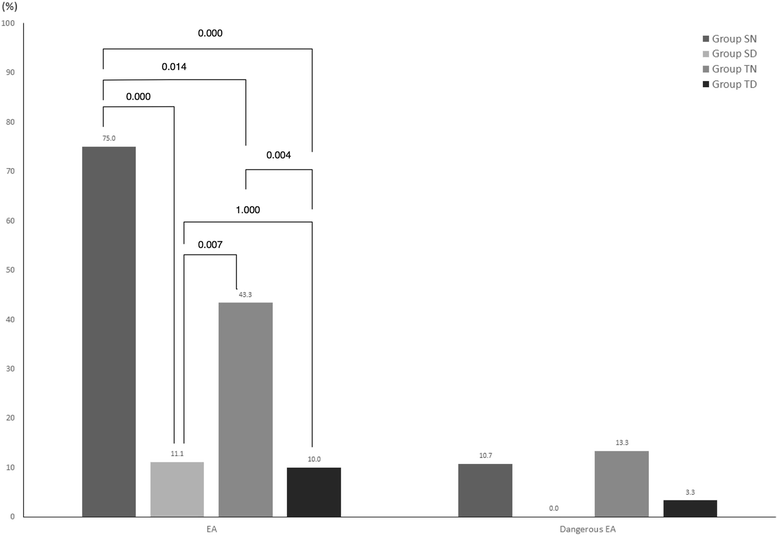Effects of dexmedetomidine on smooth emergence from anaesthesia in elderly patients undergoing orthopaedic surgery
- PMID: 26446479
- PMCID: PMC4597422
- DOI: 10.1186/s12871-015-0127-4
Effects of dexmedetomidine on smooth emergence from anaesthesia in elderly patients undergoing orthopaedic surgery
Abstract
Background: Intraoperative dexmedetomidine may decrease postoperative emergence agitation in elderly patients due to its sedative effect. In this study, we evaluated the effect of adjuvant dexmedetomidine on smooth emergence from anaesthesia after orthopaedic surgery in elderly patients.
Methods: A total 115 patients (ASA I-II, aged over 65 years) were randomly allocated into four groups. Anaesthesia was maintained with either sevoflurane or total intravenous anaesthesia (TIVA) comprising propofol and remifentanil. Patients were also administered either dexmedetomidine (0.4 μg kg(-1) hr(-1); SD and TD) intraoperatively or normal saline (SN or TN) as a control. The bispectral index (BIS) score was maintained from 40-60 intraoperatively. All anaesthetics and dexmedetomidine were discontinued at surgical conclusion, and the recovery times (durations to a BIS = 60, 70, and 80; eye opening; and extubation) were measured. The mean arterial pressure, heart rate, Ricker's agitation-sedation scale (RSAS), visual analogue scale (VAS) for pain, and incidences of emergence agitation and postoperative nausea and vomiting (PONV) were measured in the recovery room.
Results: Dexmedetomidine significantly decreased the RSAS score in the SD and TD groups, and a calm state postoperatively occurred more frequently in these groups than in the control groups. The heart rate and incidence of emergence agitation were lower in the dexmedetomidine groups. Recovery time was higher in the SD group than in the SN group, and no significant differences occurred between the TN and TD groups. The VAS score was lower in the SD group than in the SN group, and the PONV did not differ regardless of the use of dexmedetomidine.
Conclusions: Dexmedetomidine may be an effective intraoperative adjuvant for a reducing emergence agitation and smooth emergence from anaesthesia after orthopaedic surgery in elderly patients.
Trial registration: Current Controlled Trials NCT01851005 .
Figures





References
Publication types
MeSH terms
Substances
Associated data
LinkOut - more resources
Full Text Sources
Other Literature Sources
Medical
Miscellaneous

